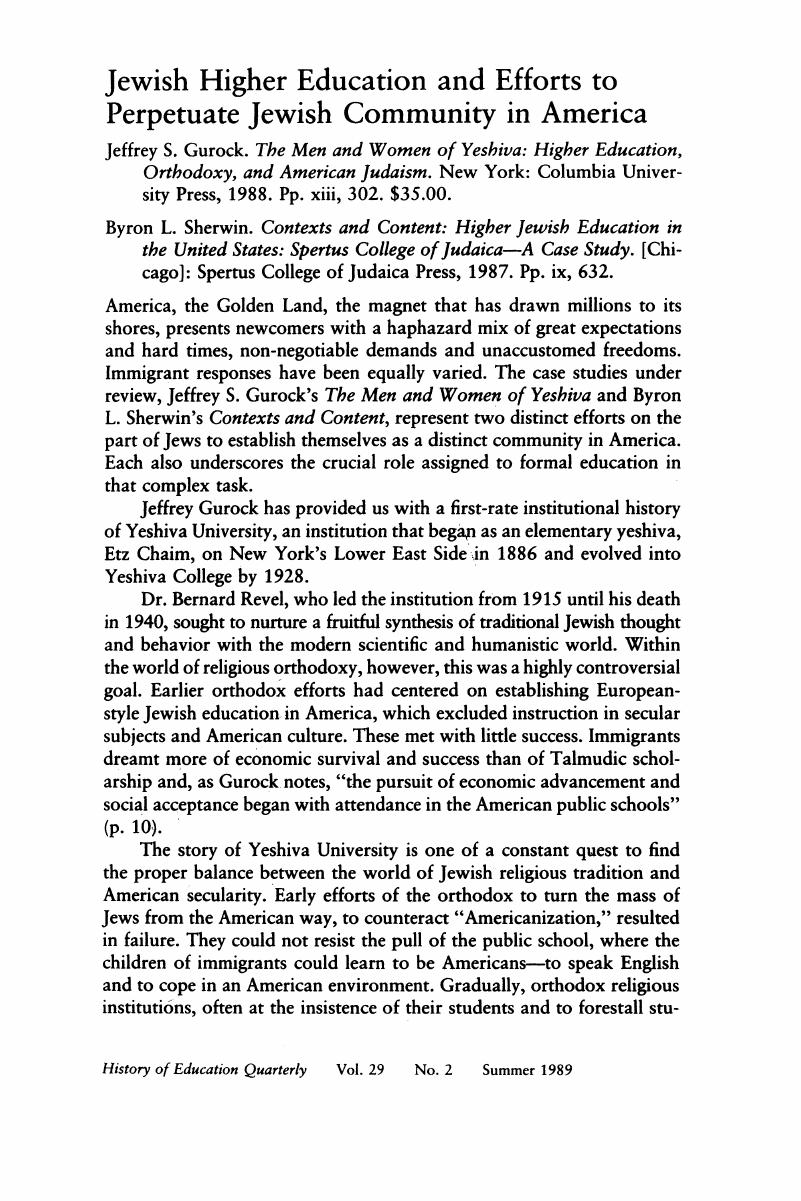No CrossRef data available.
Published online by Cambridge University Press: 24 February 2017

1 The Haskalah was the East European manifestation of a movement that originated with Moses Mendelsohn in eighteenth-century Germany, the object of which was to bring the light of contemporary ideas to the Jewish world. It was part of the nineteenth-century movement of Jewish emancipation and incorporation into the general social, economic, and political life of the times.Google Scholar
2 Stephan F. Brumberg, Going to America, Going to School: The Jewish Immigrant Public School Encounter in Turn-of-the-Century New York City (New York, 1986), chs. 5,6.Google Scholar
3 Ibid., ch. 4.Google Scholar
4 Turn-of-the-century Cultural Zionists, while sharing some of the philosophy and goals of Political Zionists, were not primarily concerned with, and at times opposed, establishing a Jewish nation-state in Palestine. They were dedicated to reviving and strengthening the culture of the Jewish people, especially Hebrew language and literature, both in Palestine and in the Diaspora. See Arthur Hertzberg, ed., The Zionist Idea: A Historical Analysis and Reader (New York, 1960), 247–327.Google Scholar
5 See, for example, Sampson Benderly, “The Fundamental Elements in the Solution of the Problem of Jewish Education in America,” The Jewish Teacher 1 (Jan. 1916): 17–27; Isaac Berkson, Theories of Americanization: A Critical Study (New York, 1920; reprinted New York, 1972); Alexander M. Dushkin, Jewish Education in New York City (New York, 1918); Emanuel Gamoran, Changing Conceptions in Jewish Education (New York, 1924); Mordecai M. Kaplan, “The Function of the Jewish Religious School,” The Jewish teacher 1 (Jan. 1916): 5–12; Nathan H. Winter, Jewish Education in a Pluralist Society: Samson Benderly and Jewish Education in the United States (New York, 1966).Google Scholar